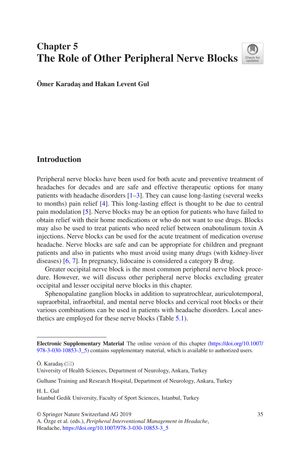The Role of Other Peripheral Nerve Blocks
January 2019
in “
Headache
”

TLDR Peripheral nerve blocks are a safe and effective way to treat various headaches and provide lasting pain relief.
Peripheral nerve blocks, excluding the greater and lesser occipital nerve blocks, have been identified as a safe and effective treatment for various headache disorders, offering long-lasting pain relief. These blocks are particularly beneficial for patients who are unresponsive to home medications, prefer to avoid drug therapies, or need interim relief between onabotulinum toxin A injections. They are also deemed safe for use in children, pregnant women, and individuals with kidney or liver diseases. The discussed nerve blocks include the auriculotemporal, supratrochlear, supraorbital, infraorbital, mental nerve blocks, sphenopalatine ganglion blocks, and cervical root blocks, all of which utilize local anesthetics. These blocks are indicated for tension-type headaches, migraines, cluster headaches, and neuralgias, with specific techniques and anesthetic dosages detailed for each. For instance, the sphenopalatine ganglion block can be administered through transnasal, intraoral, or infrazygomatic approaches, while cervical root blocks targeting the C2 and C3 roots are effective for certain headache types and neuralgias.